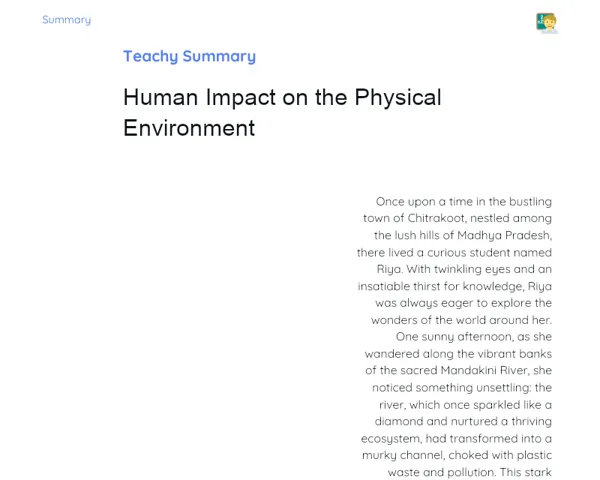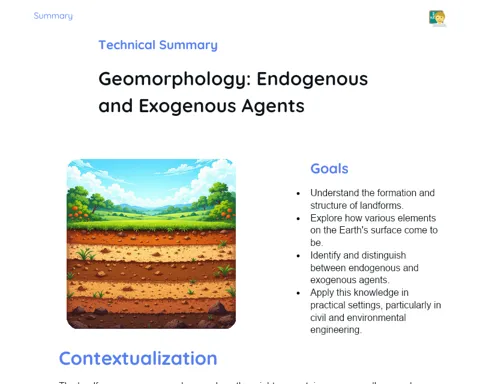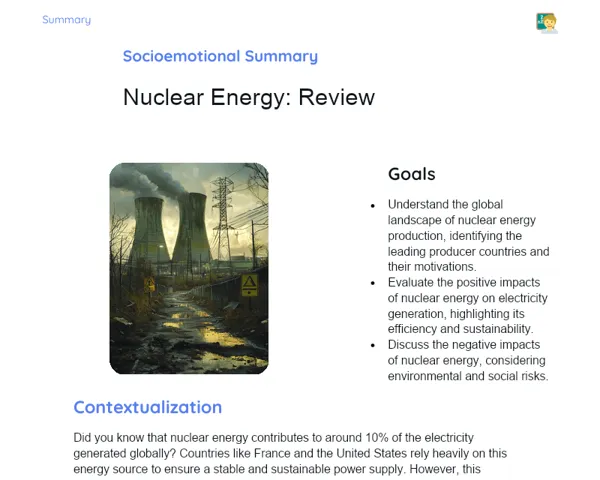Summary Tradisional | Characteristics of the Continents: Africa
Contextualization
Africa is a continent that truly exemplifies diversity in every sense – from its vast geographic landscapes to its rich tapestry of social and economic life. Covering an area of around 30 million square kilometres, it stands as the second largest continent, boasting everything from the vast, arid Sahara Desert to the lush, dense tropical forests of the Congo Basin. This climatic variety not only creates a beautiful range of natural habitats but also shapes the lives of the people living there. Moreover, Africa is blessed with valuable natural resources like gold, diamonds, and oil. While these have the potential to drive economic progress, they also bring challenges in terms of sustainable development and equitable resource distribution.
The continent’s ethnic and cultural diversity is equally fascinating. Home to over 1.2 billion people and thousands of ethnic groups, Africa offers a mosaic of languages, traditions, and religions. This rich cultural heritage adds greatly to its charm, even as it poses challenges in achieving social cohesion and balanced economic development. Issues such as poverty, limited educational opportunities, and gaps in public health are serious concerns. It is heartening, however, to note that various initiatives and policies are in place to address these challenges and foster a more inclusive growth model.
To Remember!
Environmental Features of Africa
Africa’s climate is nothing short of remarkable, with areas experiencing equatorial, tropical, desert, and even Mediterranean climates. For example, the central regions are characterised by an equatorial climate – warm temperatures and generous rainfall year-round create ideal conditions for dense tropical forests. Moving slightly away from the centre, we find areas with a tropical climate that have distinct rainy and dry seasons, which naturally influence local farming practices and vegetation patterns.
Take the Sahara Desert in the north – here, the extreme difference in daytime and nighttime temperatures, coupled with scant rainfall, makes farming and day-to-day living extremely challenging. On the other hand, regions with a Mediterranean climate, found in parts of the north and far south, enjoy hot, dry summers and mild, moist winters, supporting the cultivation of various crops.
The type of vegetation closely follows these climatic zones. For instance, vast savanna landscapes, marked by wide expanses of grassland dotted with trees, are typical in tropical regions. The Congo Basin, with its tropical rainforest, is home to a spectacular range of biodiversity. In contrast, the Sahara’s sparse, drought-resistant flora and the shrubbery and trees of the Mediterranean zones tell a different story of adaptation.
Africa’s wealth in natural resources further contributes to its environmental narrative. Minerals like gold, diamonds, and oil are not only abundant but are also central to the economies of countries such as South Africa, Ghana, Nigeria, and Angola. However, the task of exploiting these resources in a way that is both responsible and just remains a constant challenge.
-
Diverse climates: equatorial, tropical, desert, and Mediterranean.
-
Key biomes: savanna, tropical rainforest, Sahara Desert, and Mediterranean regions.
-
Rich natural resources: gold, diamonds, and oil.
Social Aspects of the African Population
Africa’s richness is not limited to its landscapes; its social fabric too is remarkably diverse. The continent is a melting pot of thousands of ethnic groups, each contributing their own languages, religions, and customs. This diversity indeed enriches the society but also brings with it challenges in fostering unity and inclusive development.
Major ethnic groups such as the Bantu, Nilo-Saharan, Afro-Asiatic, and Khoisan have not only shaped their own histories but have also contributed to the cultural mosaic of Africa. Languages abound, with Arabic, Swahili, Hausa, and Amharic among the most widely spoken. Religiously, Islam, Christianity, and traditional African faiths coexist, sometimes harmoniously and other times with tension.
Yet, the continent faces several social challenges. Many people live in extreme poverty, impacting their access to education, healthcare, and better economic opportunities. Diseases like HIV/AIDS and malaria continue to strain health services, and the lack of basic facilities such as sanitation and electricity further compounds common issues. On a positive note, multiple initiatives – from vaccination drives to community development projects – are underway to tackle these problems and work towards a fairer society.
-
Emphasis on ethnic and cultural diversity.
-
Presence of major ethnic groups and a variety of languages.
-
Ongoing social challenges: poverty, insufficient public health, and limited educational access.
Economic Aspects of Africa
The economic landscape of Africa is as varied as its people. Some nations are emerging as significant economic players in their regions, with countries like Nigeria, South Africa, and Kenya leading the charge. Nigeria’s booming oil production, for instance, makes it one of the continent’s largest economies, while South Africa is well-known for its mining sector and relatively advanced infrastructure.
Trade also plays a crucial role here. Africa is a major exporter of a host of products – from natural resources and agricultural goods to manufactured items. Oil, minerals, and agricultural exports form the backbone of economic activity in countries like Nigeria, Angola, and Ghana. Simultaneously, the continent imports a good deal of technology, manufactured goods, and food, creating a dynamic and sometimes challenging trade relationship.
However, the forces of globalization bring mixed results. While they open up avenues for growth and technological advancement, they also sometimes widen economic disparities and foster a dependency on external markets. Infrastructure deficits in many regions further complicate the smooth transfer and distribution of goods and services. In light of these factors, overcoming challenges like income inequality, inadequate infrastructure, and overreliance on commodity exports remains pivotal for Africa's sustained economic development.
-
Emerging economic leaders: Nigeria, South Africa, and Kenya.
-
Vital contributions through global trade: oil, minerals, and agricultural goods.
-
Key economic challenges: income disparity, poor infrastructure, and dependency on export commodities.
Challenges and Opportunities for Sustainable Development in Africa
Achieving sustainable development is a goal of paramount importance for Africa, especially in the face of both rapid growth and persistent social and environmental challenges. While abundant natural resources such as minerals and oil offer significant economic opportunities, their development must be managed responsibly to avoid undue environmental impact and ensure fair benefits for all.
Agriculture plays a central role in the livelihoods of many Africans and is crucial for food security. Practices like agroecology and methods that promote soil conservation can boost farming productivity while protecting the environment. Further, investments in rural infrastructure – be it improved irrigation or better storage facilities – are essential to support this sustainable growth.
Africa’s rich biodiversity is another asset that requires careful management. National parks and natural reserves are not only vital for conservation but also offer potential through eco-tourism, creating jobs and generating revenue. Nonetheless, these natural habitats face threats from unchecked resource exploitation, making effective policies critical to their preservation.
International cooperation and foreign funding can help address these challenges. Partnerships with global organisations, governments, and private enterprises provide the necessary resources and knowledge transfer that can empower local communities to adopt sustainable practices that benefit both the economy and the environment.
-
Balanced development with responsible natural resource management.
-
Promotion of sustainable agricultural practices and rural infrastructure investments.
-
Biodiversity conservation with a focus on eco-tourism.
Key Terms
-
Equatorial Climate: A climate with consistently high temperatures and ample rainfall throughout the year.
-
Savanna: A biome featuring expansive grasslands with scattered trees, typical of tropical regions.
-
Ethnic Diversity: The wide variety of ethnic groups, each with distinct languages, religions, and traditions.
-
Emerging Economies: Nations that are experiencing rapid economic growth, such as Nigeria, South Africa, and Kenya.
-
Economic Inequality: The significant differences in income and wealth distribution among various groups in society.
-
Sustainable Development: Development that meets present needs without compromising the ability of future generations to meet theirs.
-
Natural Resources: Valuable materials from nature, including minerals, oil, and water, vital for economic activity.
-
Infrastructure: The essential physical facilities and systems needed for a society to function correctly, such as transport, sanitation, and electrical supply.
Important Conclusions
In summary, our lesson on the characteristics of continents – with a focus on Africa – has taken us through a journey of understanding its diverse climatic zones and ecosystems, including the savanna, tropical rainforests, and the vast Sahara, along with the significant natural resources like gold, diamonds, and oil that underpin its economy. We also looked into the intricate tapestry of ethnic and cultural diversity that makes Africa unique, as well as serious social issues like poverty, limited public health facilities, and restricted access to education. Fortunately, numerous ongoing initiatives aim to address these challenges.
On the economic front, we learned about the rising influence of nations such as Nigeria, South Africa, and Kenya, and how Africa plays an important role in global trade. While economic challenges like income inequality and poor infrastructure remain, strategies for sustainable growth and development are steadily being put into practice. Beyond this, the sustainable management of natural resources and the vital role of international cooperation in conservation efforts emerged as key areas of focus.
This lesson serves as a foundation to appreciate the complexities of the African continent – its environmental richness, socio-cultural vibrancy, and economic potential are all intertwined. I encourage everyone to delve deeper into these subjects, as a comprehensive understanding of Africa can not only enrich our academic discussions but also inform our perspectives on global sustainability and social justice.
Study Tips
-
Revisit the main African biomes and their climatic features using maps and visual aids to solidify your understanding.
-
Explore detailed case studies of emerging economies like Nigeria, South Africa, and Kenya to learn more about the drivers of growth.
-
Keep up-to-date with articles on public health initiatives and sustainable development in Africa, as these area offer key insights into ongoing efforts and challenges.



